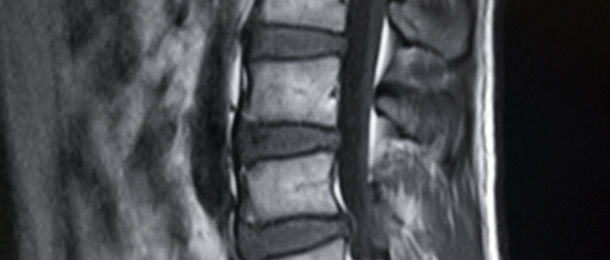Herniated Disk: What It Is and How to Treat It

Most people have back pain at some point in their lives. Back pain is one of the most frequent reasons that people are absent from work or go to the doctor. Although it is possible for back to result from many conditions, a herniated disk is one of the more common causes.
What is a Herniated Disk?
Your spine consists of 26 bones. These bones are called vertebrae. In between the vertebrae are soft disks that are filled with a jelly-like material. The disks provide cushioning to the vertebrae. They also help keep them in place. Sometimes, disks degenerate or break down. When the disks weaken, they may rupture. This is known as a herniated disk. A herniated disk allows the jelly-like matter in the middle of the disk to leak out. This can irritate the nearby nerves, causing pain. In addition, it can place pressure on the spinal cord and cause numbness or weakness in a leg or arm. Some people experience no symptoms at all.
What Causes it?
Most of the time, herniated disks are caused by either age-related wear and tear. Over time, spinal disks become less flexible and more prone to rupturing. This is also known as degeneration. In other instances, herniation can be caused by a traumatic event, such as car accident or blow to the back.
How is it Diagnosed?
Your doctor can diagnose a herniated disk with a medical history and a physical exam most of the time. They may order other tests, as well. Here are the most common tests:
Nerve tests
Nerve conduction examinations and electromyograms assess how well electrical impulses move through the nerves. This can help identify if nerves are damaged.
Imaging tests
One of the following tests may be ordered if your physician suspects that another condition might be causing your symptoms or if he or she needs to see which nerves are affected.
- X-rays-Although normal X-rays cannot be used to determine if a disk is herniated, they can be used to determine if your back pain might be due to another cause.
- Computerized Tomography Scan-A CT scan refers to a series of X-rays taken from many different viewpoints. The images are then combined to create a cross-sectional view of the spinal column, as well as the structures surrounding it.
- Magnetic resonance imaging-Also known as an MRI. This test uses a magnetic field and radio waves to generate images of your tissues and organs. An MRI is often used to pinpoint where the herniated disk has occurred and to determine what nerves are involved.
What Treatments are Available?
The primary goal of treatment is to help the patient return to their normal level of activity and relieve pain and other symptoms that result from a herniated disk. Every patient’s treatment plan should be individualized depending on the source and severity of the pain and whether or not they are exhibiting any other symptoms. In most cases, patients start with a course of conservative care prior to considering surgical options. In rare cases, immediate surgical intervention may be needed to prevent more serious symptoms. Conservative treatments for a herniated disk may include:
- Exercise programs or physical therapy
- Massage therapy
- Acupuncture
- Cognitive behavioral therapy
- Bio Feedback
Other treatments for herniated disk include:
- Pain medications
- Epidural injections
- Spinal Surgery
Although disk herniation can be quite disabling, with proper treatment and care, most people completely recover. If you or your primary care physician suspects that you have a herniated disk, seek the advice of a pain management specialist. They can provide you with a range of treatment options to help you return to your previous level of activity.
If you are reading this on any other blog than Comprehensive Pain Management Center or via my RSS Feed, it is stolen content without credit. You can find us on Twitter via @CompPainMgmt. Come and visit our blog at http://www.compainmc.com/blog/.

